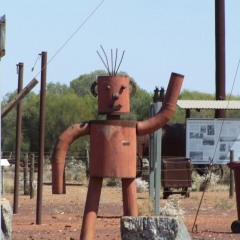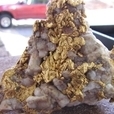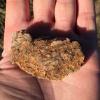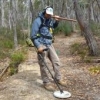Leaderboard
Popular Content
Showing content with the highest reputation on 01/24/2017 in all areas
-
Well, I attended the Minelab Partner conference this last weekend and got to visit with a number of friends, both dealers and Minelab company folks as well. The ICMJ may not be a detector dealer, but we are a business partner in the sense that we run their ads and help them get the word out on their products. Of course I signed a paper that I could not talk about anything I saw, so that limits what I can say. However, I can say that Minelab has long been a very research and development focused company (no secret there) and everything I did see showed that they are continuing in that direction, with good stuff in the pipeline to come and good stuff in a number of categories. They will all come out in their own good time when the products are ready. The dealers I spoke with were looking forward to the release of the items that were discussed - and that's about as much as I can say. I could not make the last conference which was held in New Orleans because of conflicting commitments to the magazine, so it was good to make this one. Lots of folks were there who are involved in prospecting and metal detecting. As an example, Steve and I had visited Reed's prospecting shop in Perth years ago, and the owners were there in Las Vegas and I had a fun chance to catch up with them while I was there. There were quite a few folks from the land down under in attendance and not just folks who work for Minelab, but dealers too. The event was very well attended and I think the fact that it was held at the end of the Vegas Shot show was a factor in bringing more people there. There was a lot of good, open give and take communication. Minelab even gave out little wireless voting devices that were like a small calculator, and then they would ask to get opinions from the dealers and take input via these little voting devices - it was very cool and interesting to see the opinions of the dealers as a group in real time. It didn't take long to see that although there were a number of dealers who were prospecting focused, there were even more that were coin and treasure focused. There were also times to ask questions and make comments, with lots of good questions and comments from Gerry of Gerry's detectors in Boise and Nevada's own Doc Lousignont from Las Vegas. I also got to meet Ben Harvey, the new gentleman who will be leading Minelab North America (Gary Schafer's replacement). Ben seems like a good guy and I'm sure that folks will get to know him better over time - he's only been on the job a short time. So all in all, an excellent trip and the meetings I think were a big success. Although the forecast looked brutal for my drive down there with a bad snow storm both the day that I was going down and on the day I was coming back, it was not nearly as bad as it could have been as a fair amount of the storms from Fallon south fell as rain, not snow. Going down the snow lightened up considerably east of Sparks and cleared out before Fernley and then coming back I had bad snow over Goldfield summit and also from Fernley to my house, but I've seen worse. I had feared it would be bad most of the way and turn what is a 7+ hour trip when the weather is good into a 15 hour fight with the snow and ice, and it was just not that way. I think it took a little over 8 hours to get there and about 9.5 coming back. I rode the monorail back and forth from my hotel to the Conference hotel and that was a fun thing.11 points
-
Maybe post the serial numbers here so we all have them. one chance in a million one of us would spot them somewhere but you never know. I've got a bunch of gpx 4000s if you need something to get you by.4 points
-
Chet. Thanks for that. I'm not 100% sure on the size/shape of the nuggets as l haven't seen them but l have been led to believe they are solid chunky bits. I had a few issues with the video that day and when l uploaded to youtube l wasn't happy with the vid so didn't make it public and was going to go back and do it again using both coils. I was mucking around with the youtube settings the other night and must have unrestricted it by mistake so when l realised it was public and had a few views l thought l may as well leave it up there until l do the other vid. It's a fact that every target you detect gives a different signal response which the detector reacts differently to. The next target you hear could react differently again to swing speed. That is why l investigate all responses of the detector until satisfied. There are numerous nuggets l have dug that have only faintly signaled on one sweep direction. I actually think that this is where the Zed shines as when cross checked with a GPX those signals couldn't be heard until a bit of ground had been taken off. There would not be one detectorist out there who has not walked away from a nugget after dismissing it as ground noise trouble is 98% of us will never know we did the other 2% were unlucky enough to witness someone else dig the signal they dismissed. I found this out by experience several times which is part of the learning curve.4 points
-
Might be a good idea to notify Minelab if the thieves try to have some warranty work done. Brian.3 points
-
They didnt take the 19 inch coil????? Maybe they didnt want to get 30% more time in jail?? Too soon???? Too sad to cry...3 points
-
That's horrible, sorry to hear that. I am looking for a really good deal on A GPZ, but not that way. Best of luck on getting your detectors back. Chris3 points
-
The tones are merely an artifact of the ground balancing system. Depending on where the ground balance ends up at, possibly in conjunction with other settings, you will get either a hi-lo or lo-hi tone. In general hi-lo means small target and/or low conductive (short time constant) and lo-hi means large target and/or high conductive (long time constant). Whether a target is lead or gold or whatever is not part of the equation per se except as relates to metal conductivity. Since the ground balance point changes depending where you are responses can change. Different ground modes will also change responses. Similar responses can be had with any ground balancing PI detector. A person, with enough time in a given area, may learn that certain tones correlate with certain targets. Dangerous territory but it can be done. For instance, small gold normally goes hi-lo. Large iron junk normally goes lo-hi. This can help in areas where large nuggets are not likely. But a large gold nugget and even some smaller, round, solid nuggets will go lo-hi, hence the danger. When in doubt - dig it out!3 points
-
Paul, so sorry to hear this news. My son's a Denver sheriff, I'll spread the word easterly, just in case they go prospecting in Colorado. Heck, if you think there'd end up in China I'll call my father in law, he was Shanghai Chief of Police, we could break their knees in China too, you could have the first whack!2 points
-
If you would like a preview Paul, just put your FORS CoRe in Gen (all metal) mode and dig everything. The GPX iron discrimination does not work at depth.2 points
-
Hi G.B. Thank you for doing these very informative mode comparison tests. The wireless microphone audio was a little weak and hard to follow at times; for clarity I have summarized my understanding of your tests as follows: Each test run was on the following targets in sequence that have been buried for more than six years: 1. a 22 bullet at 6” 2. a 22 bullet at 8” 3. a 22 bullet at 9” 4. a 22 bullet at 12” 5. a ½ oz piece of lead at 12” Do you know the shape and size? 6. a ½ oz piece of lead at 14” 7. a ½ oz piece of lead at 18” 8. a 10 oz piece of lead at 27” Do you know the shape and size? JP’s usual conservative settings were used which are..... • Threshold: 27 • Audio Smoothing: OFF • Volume: 8 (I use the B&Z booster through twin speakers) • Volume Limit: 8 to 10 • Ground Balance: Tracking • Gold Type Mode: General for solid heavy nuggets over 10 grams, High Yield for rough gold or solid nuggets 15 grams and down • Ground Type Mode: Difficult, because the ground here is nasty • Threshold Pitch: 60 • Ferrite Balance: Perfect at all times (regularly check it) First test run starts at 2+ minutes into the video; High Yield Gold Mode, Difficult Ground Mode Second test run starts at 6 minutes into the video; General Gold Mode, Difficult Ground Mode Third test run starts at 8 minutes 45 seconds; Deep Gold Mode, Difficult Ground Mode Fourth test run starts at 12 minutes; High Yield Gold Mode, Normal Ground Mode Fifth test run starts at 15 minutes 35 seconds; General Gold Mode, Normal Ground Mode Sixth test run starts at 18 minutes; Deep Gold Mode, Normal Ground Mode Do you have any information on shape of the large lead pieces? I look forward to your video of the GPZ 14 coil responses. Have a good day, Chet2 points
-
There is better geologic mapping available Tom. The maps and kmz available on the mrdata site are very low resolution generalized maps. You will find on those maps that the accuracy is only so so and the precision is very dependent on the mapping system being used. They can only give you a general idea of where faults and other features are located. We present that same mrdata mapping on the Land Matters State Geology Maps with the ability to see them in combination with aerial imagery or topos. A land status map layer is available as well as the PLSS grid to help you find your way around. The fault layers when available are displayed separately for ease of use. Many of the Land Matters maps have additional features as well. For example the Arizona map has Arizona rock chemistry location sample data and a mineral potential map layer as well. Each State geology map will be added to as data, time and funds become available. If you are looking for better geologic mapping you can get the best free geologic maps available for any given location with just a few clicks. Those State Geology Maps I mentioned above have the ability to direct you to more and better information than you will find in those google kmz or even the Land Matters map layers. Here's how: 1. Start up the appropriate State Geology map. 2. Zoom in to your area of interest. 3. Click on the information tool. 4. Click on the map in your area of interest and a new information window will pop up on the upper left of your map. 5 Look for the item in the information list titled Layer: National Geologic Map Database Query and click on the link Click for Map List. A new window will open with a list of all the geology maps in the USGS National Geologic Map Database for that quadrant. A quadrant is the same area as a 7.5 minute topo map - the quadrant name in the information window is virtually always the same name and area as the 7.5 minute topo . Many if not all of those maps are available for free download on that same web page. Typically anywhere from 15 to 30 maps are available for each quad area. The 1:24,000 scale is the most detailed map and as the 1: numbers get bigger the map covers a larger area and generally has less detail. Most of those National Geologic Map Database maps aren't in a form that you could easily display on another map but they have much more detailed information than web maps like google or Land Matters. They can be very useful as is for studying a specific area. At our MinerDiggins business we do digitize these higher detail maps but that is truly a major effort. Essentially each map is reproduced by hand and the map information is hand entered in a database for each feature. A 200 square mile area usually takes an experienced cartographer about four to six weeks full time to digitize a single map. That really does pay off in the ability to use the geology information in combination with other mapped features as FootPrints software users know. Unfortunately the time involved pretty much guarantees most of the more detailed geology maps won't be made available in modern mapping form anytime soon. Faults can be found from aerial images, 3D models and inferred from local geology. Contact zones can be associated with faults and even more important with localized enrichment. As jasong pointed out the real facts will only be found on the ground. Maps and aerial views can help you focus your search for enriched areas but in the end only feet on the ground can bring you a real knowledge of where fault features are located. Illinois is a tough nut to crack geologically speaking. As a good portion of the State is buried under hundreds (or thousands) of feet of glacial fill and loess much of the basement geology is inferred. Follow those links on the Illinois State Map and I think you will find more information is available about Illinois geology than you imagined.2 points
-
For those not following VaNursePaul's Facebook page we had a major theft at my house this morning. Paul had his travel trailer parked in my driveway and our detectors in his Toyota Sequoia parked next to the trailer. Sometime in the wee hours someone stole the Toyota parked right next to the trailer where Paul was sleeping. While we were making a police report they found the Toyota a mile away abandoned, no detectors. The homeowners policy only covers property stolen from my vehicle, not a visitor's vehicle. Paul is checking his renters policy, we're not too confident that the insurance company will make good. You know how it is with insurance, they like those premiums but hate to pay claims. The cops have the serial numbers and we'll be checking craigslist etc.. Anybody hearing of a really good deal on used GPZ let me know.1 point
-
1 point
-
Fred, also select all your waypoints (checkbox), then select file in upper left hand corner, then save as.1 point
-
The not so technical way - https://www.uvm.edu/~swac/docs/mod7/Exporting.pdf The official technical way - https://support.google.com/earth/answer/166438?hl=en1 point
-
i really dont think they have a clue what they stole...I just hope one of the dumbos activates my EPIRB.... they will have all kinds of new friends.1 point
-
I may trade you a GPZ19 you can use for a snow shovel--- for a 4000 Condor is the one who got hammered--i have about half the insurance.... but he has none---sadly we had been using my vehicle--if he had the detector in his vehicle 0 problem......grrrrrrr...1 point
-
Fred you could plug a USB drive in your old computer then go open up GE, go up to file and you should see all of you KZM files, then copy those to your USB Drive and copy then to your new PC.1 point
-
Condor said he had a copy of all your waypoints-- if you want a print out---lololol Campsites too in the Potholes!!! Sorry Fred, AS you can tell i am trying to repress my agony with rough humor1 point
-
Fred on my Mac, when I migrated all my hard drive info. onto my new computer, Google earth and all my info, came over intact. Do you have a back up drive of your main hard drive? If so, you should be able to do the same… good luck.1 point
-
1 point
-
1 point
-
That sucks Paul! Sorry to hear that, I think I'm gonna keep my 7 with me in bed, when I sleep. :))1 point
-
The coiltek sky hook support is similar to the camera support photo but did not stick up so far above the top of the head. I know Doc is also considering some such product with a more or less similar design. The problem I saw is the support was all metal and I could not see how one could get down on one knee for target recovery with out setting the detector off.1 point
-
I hate thieves. Good luck. You may want to give the local pawn shops a heads up. A few years back a few kids try to steal my wife's car, thankfully one of my dogs was doing his job.1 point
-
1 point
-
I get GPZ signal responses on targets (gold or like-sounding pieces of lead etc), that are both high-low and low-high using the same settings. Can anyone educate me as to why both signals produce gold - even though the signals differ on similar size targets (mostly small), at the same relative depth? Thanks!1 point
-
Low expectations do increase the happy factor when the trash turns to gold...you are a wise ....man. fred1 point
-
looks like the butt-holes were after the detectors...likely in Mexico by now. Back in 2003, I had my 2200 and all my stuff taken from my car in my driveway...muy malo! fred1 point
-
This is so effed up. Sorry my friends. I see a Craigslist sting operation in the near future .1 point
-
Its a bummer. Be February before I get to swing out side again. Mike1 point
-
1 point
-
1 point
-
HI Steve, ive looked at the GPX models and there awesome units but i think if its going to cost me £2000 to £2500 its a bit too much for me at the moment. something to aim for though. ill certainly be keeping an eye out for one of the GPX models,nothing comes close to them. I did originally ask for something with good discrimination but the difference in depth is unbelievable. its maybes the way to go. slow and dig everything! at least i won't miss anything but thanks for you time and all your help its very much appreciated ?1 point
-
1 point
-
Hi Chris, No wish I could of attended, but didn't get an invite :(.... Sounds like a bunch of great folks went. I did not hear about the shoulder sky hook, but funny you mention the sky hook. If it's anything like the picture, I used one on the 5000 when it first came out using the Atlas support. But to me the pro swing harness by minelab is much better. I also heard about the new coil for the ctx 3030, which will be nice. Dave1 point
-
Dont tell me they copied General Herculese sky crane! ??? I can feel a new vid coming on !1 point
-
And "Its got Iron Discrimination! Most Gold guys have it Off ....but your just the "Man to Master it and:Teach this forum Wuzzzzzzzzzzup....and report back. Cheers, jd1 point
-
GPX 4500 is £2500.00 new from an authorized UK dealer http://www.joanallen.co.uk/minelab-gpx-4500-gold-metal-detector-p/10373.htm1 point
-
I rarely ever find nuggets that are reverse signals. They're always seem to be iron rubbish. High low high signals that sing on my GPZ in a clear, high tone almost always turn out out be gold. I dug a loud chattery 2.5 gram nugget that was on the surface once that warbled like a .22 shell so you gotta be careful. I've also found deep nuggets with the famous GPZ threshold static sound that doesn't sound like a metal target but it's enough of a repeatable, interesting break in your threshold to make you pause and do a boot scrape.1 point
-
Hey Chris, Good to hear it was a fun time and success, I did not have to sign a paper, so I could spill a little of the beans.... seems a new gold detector called the monster is coming out... It will be under $1,000 , possibly a VLF??? Also new handheld probes, ect... but no new big gold detectors above the 7000.... Really stinks since there was an aftermarket coil company there, that they cannot make any aftermarket coils for the GPZ... wish Minelab could release the info so different coils could be made. Dave1 point
-
The one nice thing is you do cover more ground easier. It feels like you're sweeping around a trash can lid on the end of your stick but that's nothing new to guys who have experience with larger coils. I've dug one big specimen that was almost two feet deep and under a buried boulder with my 14" coil. Besides that the deepest targets have been solid slugs around 18 inches deep. That's nothing for the GPZ and they were all fairly easy to hear. Just nice mellow tones missed by others because I'm sure they'd have been heard by a GPX as well. I tend to 'think outside the box' a little when I detect and bushwhack under trees and brush and sometimes it pays off.1 point
-
Nice finds for only a few hours! It rained so much up in Norther California we had no opportunity to get out this weekend.1 point
-
Yep, I've got more in transit, but I can only ship to Australia. This is a Nugget Finder product, so will be available through Nugget Finder dealers in the US. Cheers, Nenad1 point
-
Idahogold, have you ever detected in the U.K.? We are talking thousands of years of ferrous targets in the ground. The original poster did say iron discrimination is important for good reason. A GPX no doubt has the depth, but it is seriously lacking in the ability to discriminate ferrous targets.1 point
-
Seriously id go for Minelab gpx .45 00 thats what I carry fully loaded everyday with a nugget finder advantage14" round . You'll clean up! And you can thank me later! Cheers, IG from -15c Idaho USA1 point
-
Yep, field observations is key for small scale prospecting, maps are good for generalization though. There are secondary observations you can make to ID faults on the ground that are too small to see by air, hard to recognize, or just buried now. It's too complicated for a single post though, but it's one of the main "secrets" I (and many others) use in exploration. You mentioned contact zones Andyy, that's a good one. Often you can observe contact metamorphism in these zones too, and these sorts of rocks and minerals can be observed in the float even if the original old fault is no longer exposed. Also dikes can get refaulted and these are sure giveaways on aerial imagery - you follow the line and then BAM, a zig zag in the dike, probably worth investigating. Anyone looking for faults should google image search "slickenside", it's also a good sign that can be hanging around in the float, or maybe one of the walls eroded away but you can see remnants of it on another wall and you know it was a fault and not just erosion. Etc...1 point
-
I second JasonG. My preference is to open up .kmz files in google earth. Certain Garmin GPS will allow you to import images from google earth. this is my preference. Identifying the faults even when you are right where the map tells you, is still somewhat difficult to me as well. It would be nice to see a crack or obvious fault like the San Andreas, but i have never found them this way. I am looking for contact zones of different minerals or dikes created by minerals being forced up through these faults.1 point
-
High Yield and General/Xtra Deep are like a multi frequency VLF, High Yield is the equivalent to say a 70 Khz Gold Bug II, whereas General is more like the 32 Khz XT 17000. I give these examples to put things into perspective when your chasing a range of target sizes. Most people will do best in High Yield just like the GB II outdoes almost every VLF machine on the small gold thanks to its high freq. However when you add the ability to use Normal Ground Type modes the lines get blurred, in all my testing High Yield Normal has provided the MAX depth on any target so long as the ground allows its use. General is better on solid sluggy nuggets at depth with a BIG reduction in ground signal especially the near to coil responses such as saturation but also salt and general mineralisation signals. When in Difficult mode the differences on target sizes becomes more obvious, High Yield Difficult is very good on any type of nugget up to around 10 grams, if the gold is rough or prickly or specimen-like then the actual weight of the gold doesn't really have much say in the response, it is then down to the "Time Constant" of the target. The differences I suppose are very similar to Fine Gold and Enhance on the 5000. The key is to come to terms with the type of gold you are seeking and the possible depth range of that gold, I have had considerable success in noisy variable ground chasing solid nuggets over 12 grams using the General/Difficult modes taking full advantage of the better signal response given on sluggy heavy gold. There is however a "Hole" in the timings of Normal modes where a half ounce nugget will respond better in Difficult compared to Normal, this was also evident on the GPX 5000 and we actually caught it on film when Steve was visiting with me here in Australia. I'm not sure how evident this hole is in some ground types as differing ground types moves the GB null around quite a lot so it might only be in certain areas. JP1 point
-
Yes Strick here is my story for the third one. I worked for the Santa Fe Railroad as a Carman Welder for 38 years retiring the last day of 1999. When I would go home after a bad day I would stop at a crossing of the Santa Fe Trail, I had permission from the owner to metal detect, the first target that I dug I would put all my anger and troubles in the hole and cover it up so as not to take them home to the family. I sure hope the farmer didn’t take them home with him at harvest time. Once there as I was leaving I noticed some camp fire rocks and made note of them. Dec 6 1988 I had some time to go back and started to hunt around the rocks, not finding any thing I started to wonder off but some thing said go back to the camp fire site. Having dug mini musket balls I got a hit thinking it was another musket ball I plunged my digger in the ground and turned up a 1836 2 ½ dollar gold coin with a nice recover scratch on the face. Feeling bad about the scratch but a wonderful find anyway I put it in my collection. Later a friend made me a bezel and sold me a 14k 20 inch chain and I wear it daily , every time I put it on it brings back the memory of the day I found it. At 79 years old I am still looking for another one. GOOD LUCK to all KS Stick. I1 point




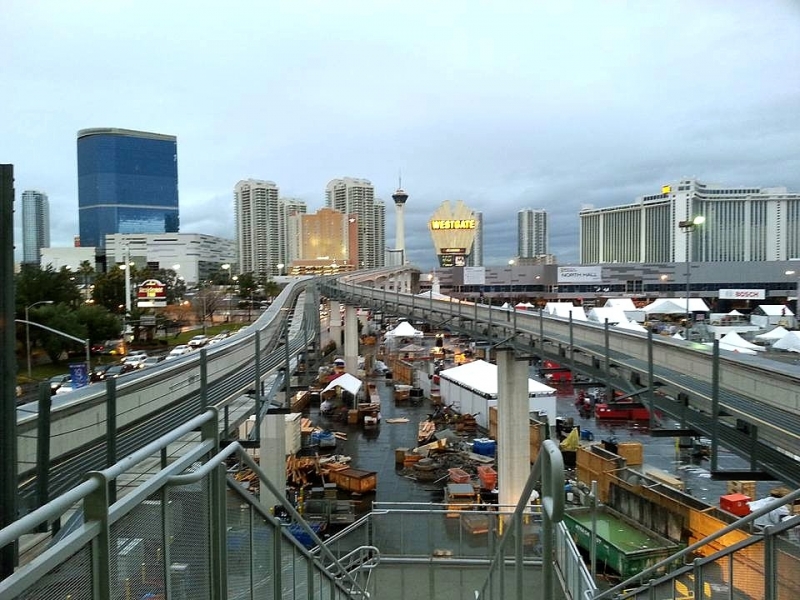
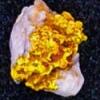
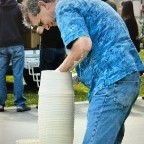




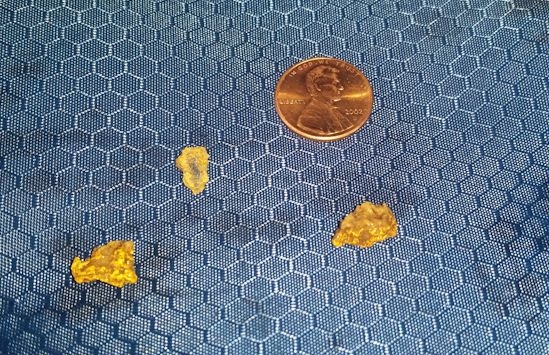

.thumb.jpg.77e4cb5bf39d44bdd2050d2edb7dfdb1.jpg)



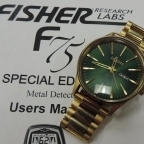

.thumb.jpg.ee7a783ce30b7b5a9b1f7fddd3ae7c83.jpg)
